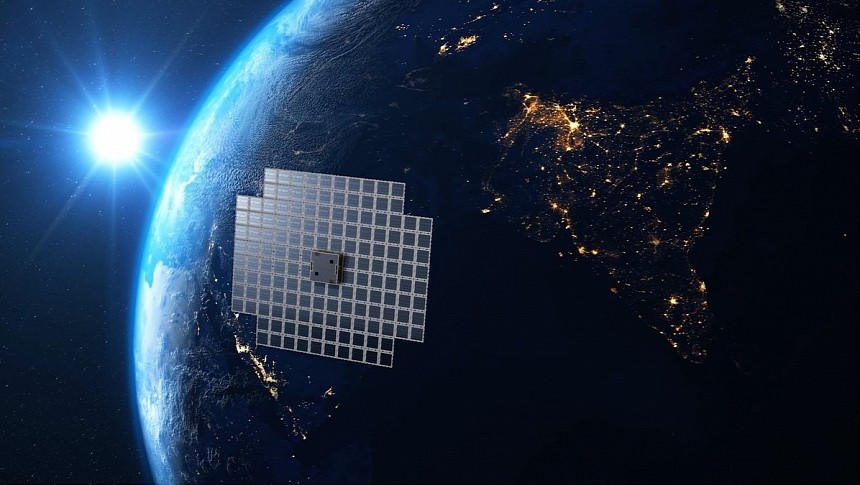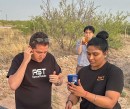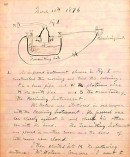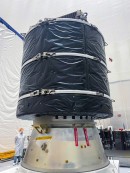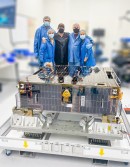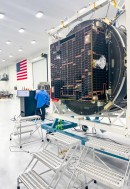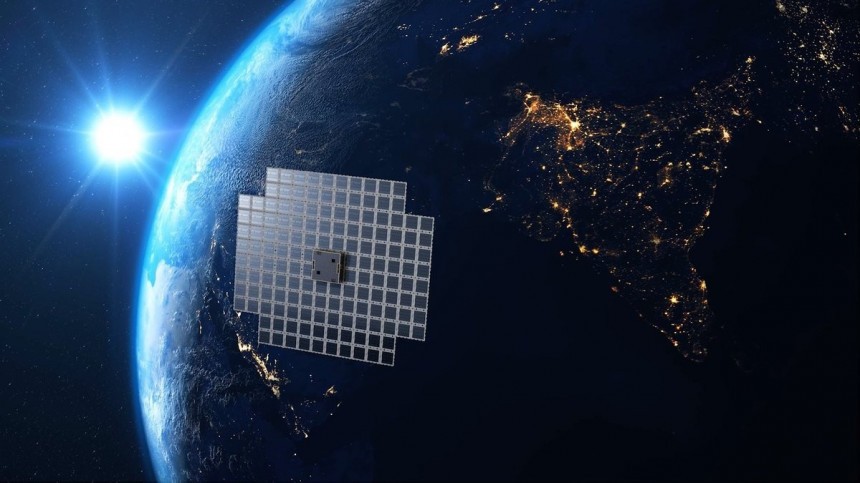One hundred forty-seven years ago, a Scottish engineer uttered the following phrase: "Mr. Watson--come here--I want to see you." The man's name was Alexander Graham Bell, and the words were addressed to his assistant at the other end of the line. This was the first telephone call in the history of humanity. Another historic milestone was reached on April 25, 2023: the first space-based voice call using regular smartphones.
The historic feat was achieved via the BlueWalker3 (BW3) satellite, the largest commercial communications array floating in Low Earth Orbit (LOE). The BW3 was launched last September with the help of SpaceX's Falcon9. It can receive and transmit radio signals from and to standard smartphones.
Or, to put it in layman's words, we should have no more "no signal" issues anywhere on this planet because AST SpaceMobile (the company behind this project) aims to put some one hundred such telecom relays above our heads. And above the weather – one of the wireless telecommunications' greatest enemies.
One week ago, on April 16, the company's CEO tweeted this announcement: "Smartphones of many types during our testing are exchanging SIM and network information directly to #BlueWalker3 with an out-of-this-world roundtrip of ~2,600 miles. One more step closer to #5G space-based cellular broadband!"
The first step, a two-way voice connection – the basis of telephony – was achieved with one seemingly ordinary call from Midland, Texas, US to the other side of the planet, in Rakuten, Japan. Thanks to BlueWalker3's extreme field of view of 300,000 square miles (777,000 square kilometers), two handheld devices (Samsung Galaxy S22) over 10,000 miles (16,000 kilometers) apart were able to send and receive signals.
The 1.5-ton satellite hovers at an altitude of 500 km (around 320 miles) above sea level. Its phased array antenna spans almost 700 square feet (64.4 square meters). It is so large that under the right conditions, it is the brightest celestial object in our skies (after the Moon, of course).
As impressive as it is, a single satellite won't eliminate the coverage gaps in everyday phone communications (voice and data) in remote areas. This is why AST plans to expand its space-relay infrastructure one hundred times and decorate the heavens with BlueWalker3s.
The ultimate goal is (the company claims) to provide connectivity to the other half of the planet's population that does not currently benefit from cellular broadband service. For this historic landmark, engineers from AT&T, Rakuten, and Vodafone (the order is purely alphabetical) joined their efforts to make the intercontinental-through-space phone call possible.
Made using the AT&T spectrum, the call is a critical step toward providing worldwide cosmic-based 2G, 3G, 4G LTE, and 5G cellular broadband. This achievement follows a five-month-long period of extensive tests that validated compatibility between various smartphone models and devices.
The phones exchanged Subscriber Identification Module (SIM) and network information with BW3. The uplink/downlink signal strength measurements confirmed support for cellular broadband speeds and 4G LTE / 5G waveforms.
The end-user devices are not different in any way from the ones we use daily – like that on which you probably read this story. The basic principle is this: the phone emits a signal directly to the satellite without using intermediary infrastructure (like antennas mounted high on poles). The video is a brief introduction to what the BlueWalker3 satellite is, how it operates, and how this entire new groundbreaking out-of-this-world technology works.
Or, to put it in layman's words, we should have no more "no signal" issues anywhere on this planet because AST SpaceMobile (the company behind this project) aims to put some one hundred such telecom relays above our heads. And above the weather – one of the wireless telecommunications' greatest enemies.
One week ago, on April 16, the company's CEO tweeted this announcement: "Smartphones of many types during our testing are exchanging SIM and network information directly to #BlueWalker3 with an out-of-this-world roundtrip of ~2,600 miles. One more step closer to #5G space-based cellular broadband!"
Smartphones of many types during our testing are exchanging SIM and network information directly to #BlueWalker3 with an out-of-this-world roundtrip of ~2,600 miles. One more step closer to #5G space-based cellular broadband! ???????????????????????????????????????????????????????? pic.twitter.com/jg523XWcUq
— Abel Avellan (@AbelAvellan) April 16, 2023
The first step, a two-way voice connection – the basis of telephony – was achieved with one seemingly ordinary call from Midland, Texas, US to the other side of the planet, in Rakuten, Japan. Thanks to BlueWalker3's extreme field of view of 300,000 square miles (777,000 square kilometers), two handheld devices (Samsung Galaxy S22) over 10,000 miles (16,000 kilometers) apart were able to send and receive signals.
The 1.5-ton satellite hovers at an altitude of 500 km (around 320 miles) above sea level. Its phased array antenna spans almost 700 square feet (64.4 square meters). It is so large that under the right conditions, it is the brightest celestial object in our skies (after the Moon, of course).
As impressive as it is, a single satellite won't eliminate the coverage gaps in everyday phone communications (voice and data) in remote areas. This is why AST plans to expand its space-relay infrastructure one hundred times and decorate the heavens with BlueWalker3s.
Made using the AT&T spectrum, the call is a critical step toward providing worldwide cosmic-based 2G, 3G, 4G LTE, and 5G cellular broadband. This achievement follows a five-month-long period of extensive tests that validated compatibility between various smartphone models and devices.
The phones exchanged Subscriber Identification Module (SIM) and network information with BW3. The uplink/downlink signal strength measurements confirmed support for cellular broadband speeds and 4G LTE / 5G waveforms.
The end-user devices are not different in any way from the ones we use daily – like that on which you probably read this story. The basic principle is this: the phone emits a signal directly to the satellite without using intermediary infrastructure (like antennas mounted high on poles). The video is a brief introduction to what the BlueWalker3 satellite is, how it operates, and how this entire new groundbreaking out-of-this-world technology works.
